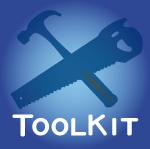| The ToolKit equalizer is optimized for pristine sound performance that preserves the warmth of the signal in a very well balanced way that is based on many years of experience and user feedback.
A huge part of the superior sound performance of the adt-audio analog audio gear is directly related with the unique principle of the EQ's that are based on an active 'Vienna Bridge' circuit. Such a circuit operates very similar to a passive LC filter but it offers a lot more flexibility. More than 25 years of experience with this principle result in equalizers that offer excellent sonic performance with every program material. Even with extreme variations of the signal the tonal performance remains distortion free and free of negative side effects. The huge control ranges of all parameters allow any kind of extensive tonal modification in the entire audio band and great improvements of the particular recording and the entire mix. Many users describe these equalizers with two terms that are not commonly used with equalizers; noble and genuine. What they mean by that is that every setting results in an improvement of the sound but preserves the natural character of the original.
The three fully parametric bands cover the entire audio band from 20 Hz to 25 kHz. The frequency control range of each band is 100 : 1. This results in huge overlapping frequency ranges that make it possible to use more than one band with almost all frequencies. You can set a soft boost with one band and use another band to notch out a disturbing frequency in the band from 60 Hz to 7 kHz. All three bands cover the range from 250 Hz to 2 kHz; which is very important for vocals. The Q controls have a range from more than 3 octaves to less than a third. This huge range allows using each band for soft, global modifications and precise repair work in a small band as well as anything in between. The boost and cut range of 20 dB makes drastic changings possible; however, the range around the zero dB position is extended to allow precise settings of 1 dB as well.
The High EQ is a very soft sounding shelving EQ, based on active RC circuitry with a slope steepness of 6 dB. It allows global modifications at the upper end of the audio band. Curve and active circuity in the default setting, 15 kHz, are optimized to produce silky sounds in the very high frequency range with boosting and to give a matt finish in the cut range that allows to repair aggressive high frequency signals that were destroyed by A/D and D/A conversations to become 'human' again. The 8 kHz switch changes the characteristic of the high band to a very soft bell that has a broad maximum at 8 kHz. This setting allows to add or reduce high freqency pressure and modify the signal structure to be more or less aggressive. The boost/cut range of the high equalizer is +/- 20 dB.
Like the high band, the Low EQ is the best choice for a global modification of the low frequency range. It is implemented as a very soft bell. In comparision to a shelving low filter, the soft bell has the great advantage that it does not boost the subsonic range. Almost all real world settings that we have seen with shelving low EQ's deal with that problem by using the high-pass filter to suppress the unwanted and disturbing boost of the subsonics. The soft bell avoids this problem effectively and it maintains the very important low frequency phase response a lot better than the combination of shelving EQ and high-pass filters that add a considerable phase shift. Any phase distortion of the low frequency range will reduce the transparency of the bass range. The bass sound becomes spongy and hollow.
A switch, 40 Hz and 100 Hz lets you select two center frequencies While 40 Hz treats the lowest audio frequency that can be heard, the 100 Hz setting operates in the range of a bass guitar. 20 dB of boost and cut range make huge modifications possible.
The entire Toolkit equalizer is serial device, which means, that all EQ bands have no mutual interaction. Each band is a separate device. The EQ has a dynamic range of more than 120 dBA and +30 dBu internal headroom. With all gain controls at 0 dB the frequency response is better than+/- 0.5 dB.
|





